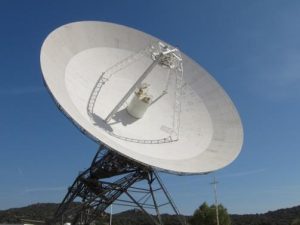What Are the Benefits of a Waveguide Isolator?
Waveguide isolators are pivotal components in RF and microwave systems, designed to ensure unidirectional signal flow and protect sensitive equipment from unwanted reflections. These devices harness the properties of magnetic materials to absorb and dissipate energy from signals traveling in one direction while allowing free passage in the other. The benefits of employing a waveguide isolator in a system are profound, impacting everything from system stability to overall performance.

Enhanced System Performance
Unidirectional Signal Transmission
The primary function of a waveguide isolator is to enforce unidirectional signal flow. This capability is crucial in preventing reflected signals from traveling back to the source, which can cause interference and signal degradation. In high-frequency applications where signal integrity is paramount, such as in radar and satellite communications, isolators ensure that the transmission path remains clear and uncontaminated by reflections which might otherwise lead to system inefficiencies.
Improved Device Protection
Waveguide isolators also play a critical role in protecting source devices from the damaging effects of back reflections. Power amplifiers and other sensitive components can be severely affected by energy that reflects back into them, potentially leading to overheating, reduced lifespan, and in severe cases, complete failure. By absorbing this reflected energy, isolators help maintain the health and reliability of these critical components, thereby extending their operational life.
Increased System Stability
Incorporating a waveguide isolator into an RF system significantly enhances its stability. By eliminating feedback that might result from reflected signals, isolators help to prevent oscillations and instabilities that can compromise system performance. This stability is especially important in systems requiring precise signal control and where fluctuations can disrupt operational accuracy.
Applications Across Various Industries
Telecommunications
In telecommunications, waveguide isolators are used to enhance the clarity and quality of signal transmission across cellular and satellite communication networks. They ensure that signal pathways are kept clear of interference, thereby improving the quality of data transmission and reducing dropped calls and data errors.
Medical Equipment
Waveguide isolators are also found in medical imaging equipment, where they improve the accuracy and reliability of diagnostic tools such as MRI machines. By controlling the directionality of the microwave signals used in these applications, isolators contribute to producing clearer, more accurate imaging results.
Military and Aerospace
In military and aerospace applications, the robustness provided by waveguide isolators is crucial for the reliability of radar and communication systems. These environments often demand equipment that can withstand high power levels and prevent signal leakage, making isolators indispensable.
Enhancing Design Flexibility and Reducing Costs
Simplified System Design
The use of waveguide isolators allows for more straightforward system designs by reducing the need for additional components to manage reflected signals. This simplification can lead to cost reductions in both the design and maintenance of RF systems.
Reduced Maintenance and Downtime
By protecting sensitive components and improving system reliability, waveguide isolators reduce the need for frequent maintenance and component replacements. This reduction in downtime is critical for industries where continuous operation is necessary.
Waveguide Isolator benefits are extensive, impacting not only the operational aspects of RF and microwave systems but also contributing to significant cost efficiencies and system longevity. Their role in modern communication and radar systems is fundamental, ensuring that high-frequency signals are transmitted efficiently and without interference, thus maintaining the integrity and reliability of critical communication infrastructures.
